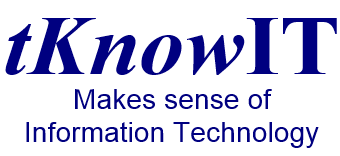Start taking the Tablets
Tablet computers, like SmartPhones, have been around for years but in both areas they were typically expensive and not simple or intuitive to use. Thanks to Apple we now have the iPhone and iPad which just about anyone can pick up and use within a few minutes.
This has led to a range of products trying to compete in this rapidly expanding market sector.
Apple controls both the hardware and software with their iOS based iPhone and iPad devices. They are easy to use and rarely need to be rebooted. The Apps market for both devices is mature and vast. One of the downsides to an iPad is that it does not support ‘flash’ video or websites. Ok for a phone but not on a device many will be looking to use as their main surfing device.
 Microsoft Windows Phone 7 (WP7) running on SmartPhones from the likes of Samsung, HTC and LG has also proved to be stable and responsive. The Apps market for the WP7 is growing quickly and based on the same model as the Apple Apps store where programs are typically free or relatively low cost and install quickly. (See my separate review of WP7)
Microsoft Windows Phone 7 (WP7) running on SmartPhones from the likes of Samsung, HTC and LG has also proved to be stable and responsive. The Apps market for the WP7 is growing quickly and based on the same model as the Apple Apps store where programs are typically free or relatively low cost and install quickly. (See my separate review of WP7)
Likewise Windows 7 for PCs, laptops, netbooks and tablets is less prone to crash or freeze, compared with Windows XP or Vista, and is typically much more responsive. The Acer Iconia W500 is a good windows 7 based tablet choice.
HP launched their Windows based Slate, which I am not even sure launched into the UK, before releasing their WebOS based TouchPad and announcing that they were reviewing their position in computer market. So TouchPad users may find their device gets no updates, support or Apps. Many reviewers also suggested it was a bit sluggish.
RIM, who makes the Blackberry range, controls both the hardware & software with their Blackberry phones and PlayBook tablet. The tablet gets mixed reviews, has an Apps store but currently is only available with a 7″ screen.
 The majority of other tablets run Android by Google. As they can’t use Apple iOS and Microsoft license Windows 7 and Phone 7 for a fee then using Android can reduce the overall price of the tablet – as it’s free. Android 3 was designed for tablets whilst previous versions were designed, developed and flourished on smaller screened SmartPhones.
The majority of other tablets run Android by Google. As they can’t use Apple iOS and Microsoft license Windows 7 and Phone 7 for a fee then using Android can reduce the overall price of the tablet – as it’s free. Android 3 was designed for tablets whilst previous versions were designed, developed and flourished on smaller screened SmartPhones.
Tablet makers can tweak Android and add their own features and Apps to it. This may help to explain why reviews of Android Tablets suggest that performance and stability can vary from brand to brand when, on paper, the specifications of the hardware are the same. The Apps store for Android is mature thanks to its growth on SmartPhones over the last few years.
My shortlist of Android tablets would be the ASUS TF101 Transformer (optional keyboard/ extended battery), Samsung GalaxyTab (if they get the injunctions lifted) and the Lenovo ThinkPad Tablet (with optional digitiser pen)
The Tablet market is likely to expand and evolve. Microsoft Windows 8, due for release in 2012, is heavily influenced by ‘touch’. Some vendors are offering interesting features such as Stylus, fingerprint swipe, keyboard attachments. They are an excellent alternative to a NetBook for web browsing and checking emails but it may be another year or so before we can throw away the laptops and desktop PCs.

You must be logged in to post a comment.